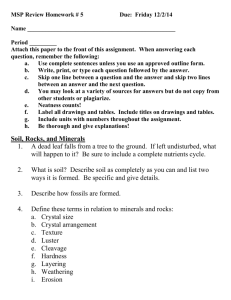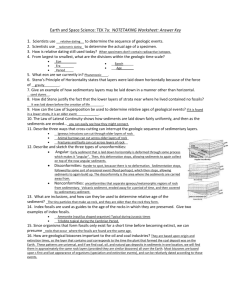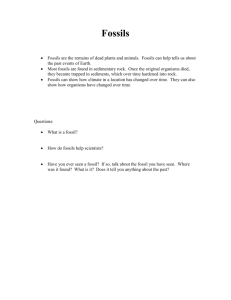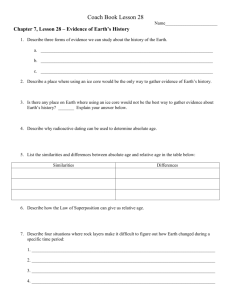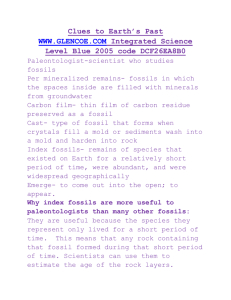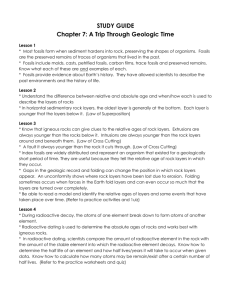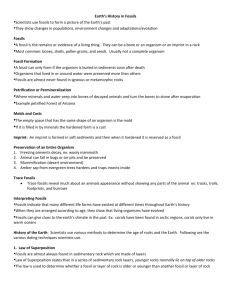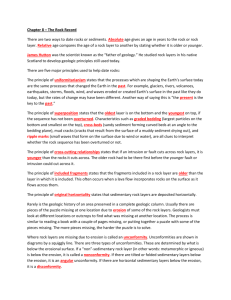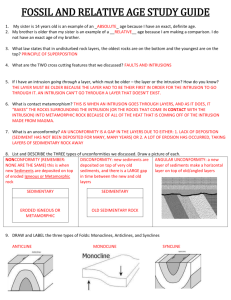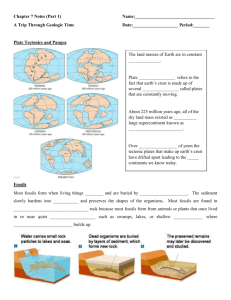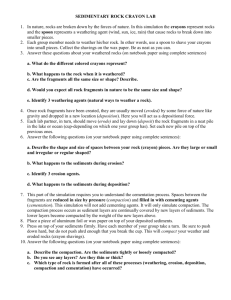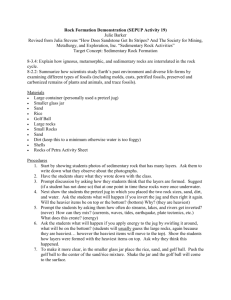File
advertisement
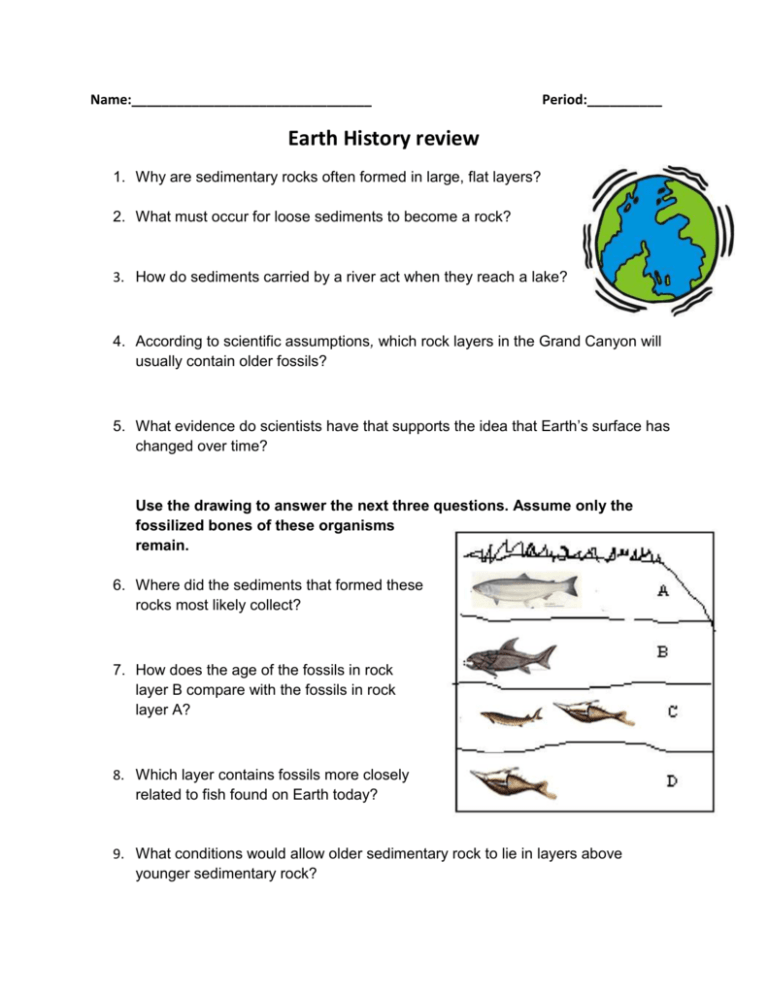
Name:________________________________ Period:__________ Earth History review 1. Why are sedimentary rocks often formed in large, flat layers? 2. What must occur for loose sediments to become a rock? 3. How do sediments carried by a river act when they reach a lake? 4. According to scientific assumptions, which rock layers in the Grand Canyon will usually contain older fossils? 5. What evidence do scientists have that supports the idea that Earth’s surface has changed over time? Use the drawing to answer the next three questions. Assume only the fossilized bones of these organisms remain. 6. Where did the sediments that formed these rocks most likely collect? 7. How does the age of the fossils in rock layer B compare with the fossils in rock layer A? 8. Which layer contains fossils more closely related to fish found on Earth today? 9. What conditions would allow older sedimentary rock to lie in layers above younger sedimentary rock? Use this diagram to answer the next two questions: 10. Which location shows older rocks above younger rock 11. Based on the diagram, what force most likely created the changes to the bottom three layers? 12. Which of the following is a typical location where a bone or shell could become petrified? 13. In a region of Wyoming covered by rolling hills, small lakes, and dry gulches, a petrified shark’s tooth was found. What does this fossil indicate about the geological history of this region? 14. In the dry and hilly region of southeast Utah, many fossil remains have been uncovered. Trilobite casts, petrified bones of alligators, and preserved dinosaur footprints, were all found in the same location, but in different rock layers. What do these fossil remains tell about the history of this region? 15. Why do recently deposited rock layers contain fossils more like animals that are alive today?

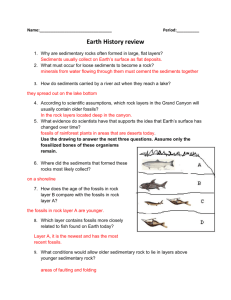






![F3-4 Study Guide for QUIZ [1/28/2016]](http://s3.studylib.net/store/data/006814899_1-56a576b1a51c0f876f28a8da0f15de89-300x300.png)
